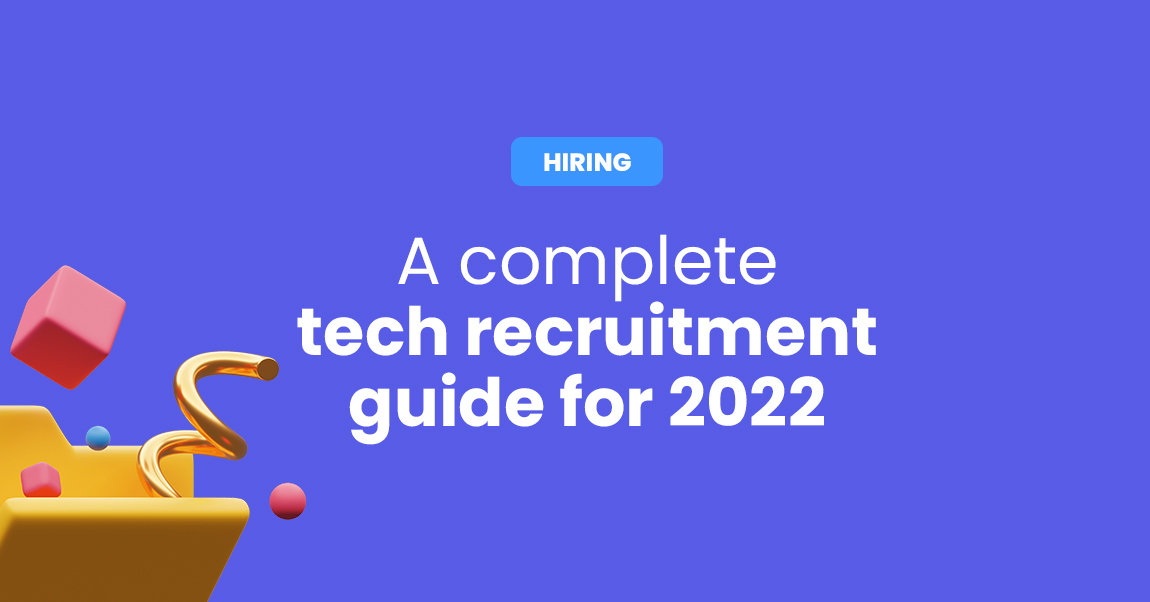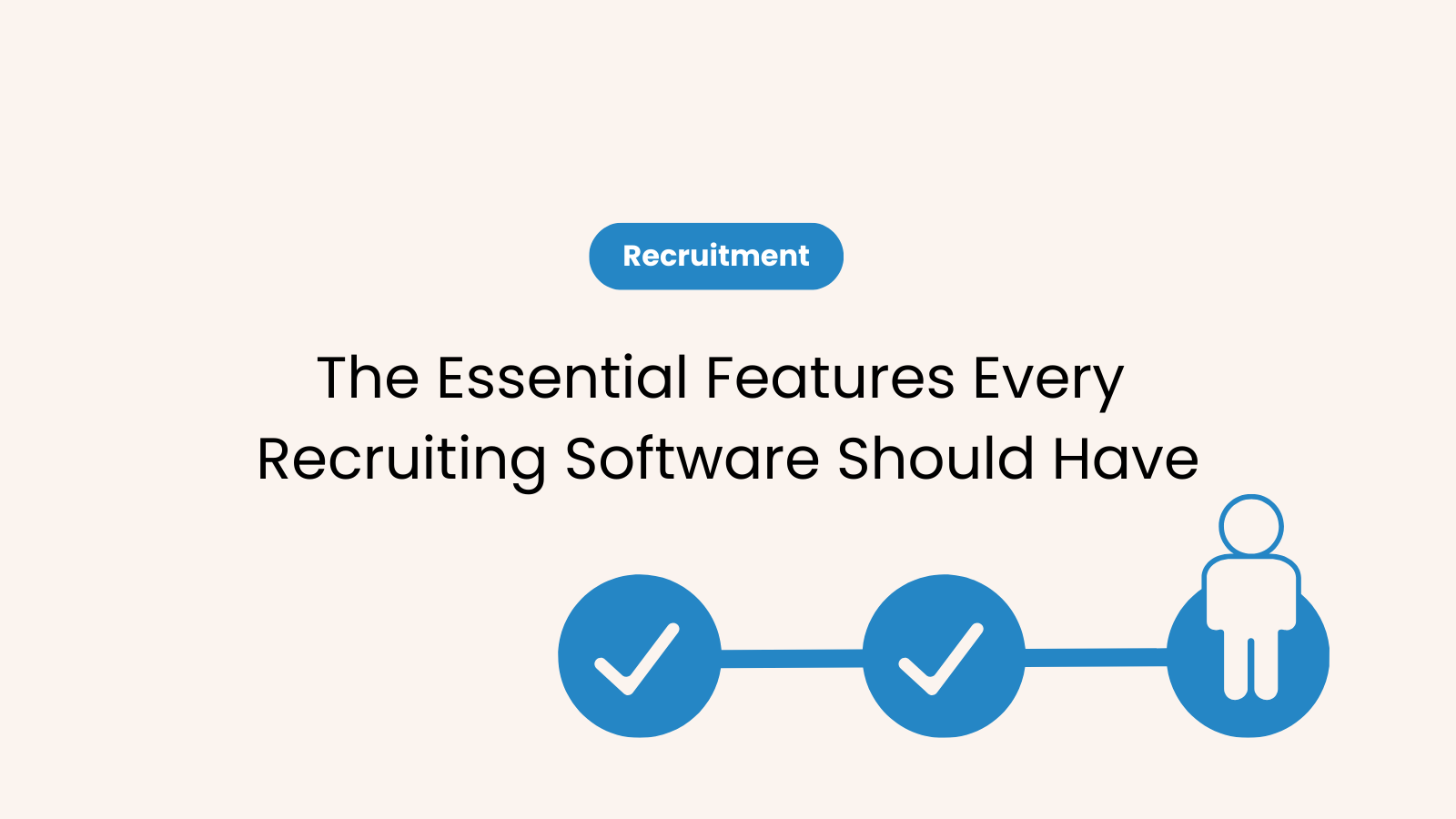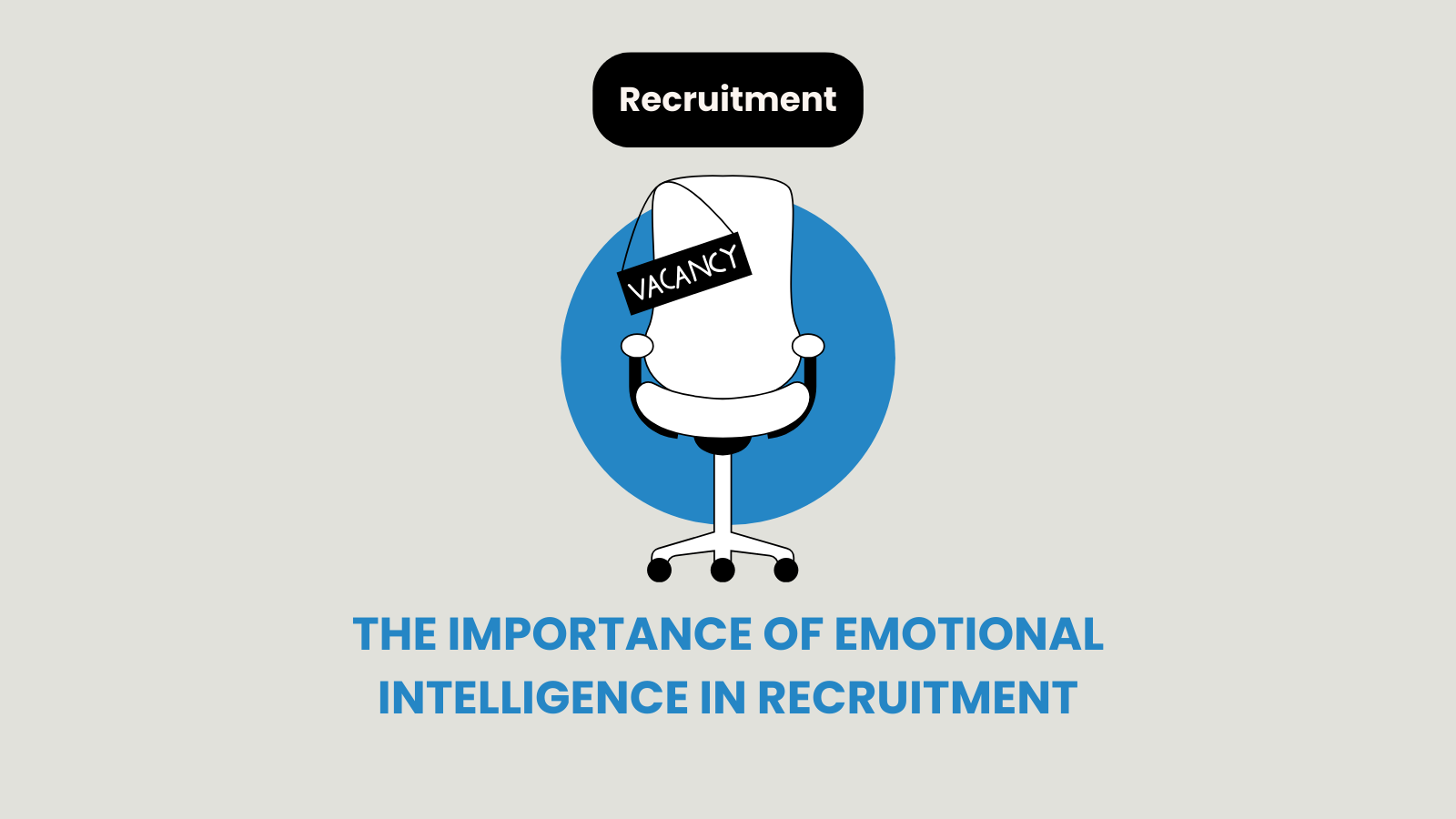Here are some amusing Google searches for you. First, type The Wizard of Oz & see what happens. Then, type “recruiters are” and take a glance at how the search engine finishes your sentence. Trust me – not good! So, maybe each recruiter needs a bit of a nudge. And maybe a comprehensive tech recruitment guide can help out with this issue.
Let’s start with the common aim. All recruiting specialists strive to find, attract, hire, and retain the best candidates. In the meantime, they should build firm bonds, develop a whole new community, and get a knack for marketing and employer branding. Sounds like a lot? Well, it is. But it’s perfectly manageable. So let’s start from square one.
Simple definition & basic details: How do you do tech recruiting?
Each good recruiter needs a quite broad spectrum of knowledge. Regardless of the industry they’re covering and canvassing, they simply must know about the best and most efficient practices, the company’s needs, competitors’ strengths and weaknesses, and more. So, how is tech recruiting different?
Well, for once, a technical recruiter must collect some (actually – a lot!) more specialized knowledge. Surely, most will direct their focus toward a specific segment at some point. For instance, a SaaS business will likely benefit from hiring a recruiter or a recruitment agency that has plenty of experience in their precise domain. But that’s not all there is.
Here’s a devastating fact: according to surveys done throughout 2020, around 66% of technical professionals feel that recruiters do a fairly poor job when sourcing and screening candidates. What’s their main allegation? It’s easy to guess this one. Mainly, it comes down to a lack of domain-specific knowledge. That means that most employees would be happier if developers interviewed developers.
Still, are technical skills and experience all that should be assessed? Well, not quite. So, for an all-inclusive estimate, it is best to go for: a) an in-house team of recruiters or b) a skilled and reliable recruitment agency.
Option #1: In-house tech recruiters
Relying on an in-house recruiter (or a whole squad) is the best choice if some long-term hiring needs are to be fulfilled. Meaning: if you plan to hire & grow your team constantly over the next few years, then it makes perfect sense to have a dedicated professional working on your aims – from the inside. And there is one massive perk to keep in mind: in-house recruiting specialists usually have a better understanding of your company (with its values, mission & vision). So from that point of view, they can bring in more qualified candidates who are also a better culture fit.
Option #2: Recruitment agency
Hiring a recruitment agency to help you out also has its advantages. These outside staffing firms will spot and attract skilled candidates while following your precise requirements and needs. So, first of all, they will undoubtedly help you save money + time. That way, all the relevant recruitment analytics, metrics, KPIs, and figures are bound to be boosted: fast! Plus, their market knowledge and industry proficiency will increase the quality of hire, which will affect the retention rates and many other aspects positively.
Pro tip: How to know that it’s time to outsource recruitment? If you’re in a hurry & need a quick and effective solution, it is best to seek a recruiting partner. Your current needs, budget, short-term and long-term goals dictate whether you’ll go for this uncomplicated and efficient option.
Get ready for the real stuff: How to recruit tech talent?
Wanna hear a crazy, scary statistic? More than 70% of global talents aren’t actually looking for a new job. That means that all in-house talent sourcing pros & each recruitment agency have a lot on their hands. So, what does it mean, and how will it work? Well, first – start from the very beginning. Come up with precise objectives (and hiring needs) before making a strategy and setting it in motion. Here’s a complete tech recruitment guide you will need in 2022 – a step by step overview:
- Set your aims & promote your strengths
- Learn about the market and the crowd you’re reaching out to
- Leverage data to get ahead of the game
- Become super-proficient when it comes to tech terms
- Learn to boost (and simplify!) your hiring process
- Deal with your brand & reputation
Finally, know which sourcing channels do the trick for you. Surely, there’s LinkedIn, an ally every recruiter uses daily (and kind of loves to hate deeply whenever ghosted 👻). In fact, if we look at the stats, we’ll see that 80% of recruiters source through this network. But there’s so much more you can explore & put to work! Just take a look-see over here.
The best tools & platforms that will help you source top candidates
This technical recruiting guide couldn’t possibly be complete without naming a few efficient sourcing channels. It is known for a fact that each recruiter in every industry and every corner of the world loves to use LinkedIn. Translated into (more) statistics, 90% of them use this network weekly. So, that’s an awesome piece of news for active job seekers – they can just find a smooth way to slide into a recruiter’s LinkedIn inbox. But, as we know, the drill is not as simple when it comes to hiring developers and other tech experts. And, in order to find, attract, and recruit the best candidates, we must put in use these tools and channels:
- Websites that freelance, remote, and flexible talents use, like Upwork, Toptal, Behance, and more,
- Job boards and posting platforms like Indeed where you can promote open positions and distribute ads,
- Multiple technical recruiting platforms like YouTeam,
- Massive and trusted dev communities such as StackOverflow or GitHub,
- Social media groups and channels (Facebook groups, Slack, Reddit, and more).
Most professionals who are even slightly inclined toward reviewing new career opportunities have countless options at their disposal. And their main concerns involve fake job postings, vague requirements, or pushy hiring personnel. So be sure to skip this sort of drama by offering a clear and complete job description (with all the accurate information) and be accessible but not obnoxious.
Take the basic step: Know what you want.
All companies have unique needs. And for that matter, their ideal candidates don’t necessarily possess the same background, qualifications, or personality traits. So now, what do tech recruiters look for? There are three unavoidable aspects to cover: a candidate’s work history, whether the tech stack they used matches the company’s need, and if they have the right attitude toward work.
And the great thing to memorize is that most of these authentic needs and information can be put into a single job description:
- Say a few words about your business and make your intro realistic yet captivating,
- Write all that’s relevant about the specific role, including the key skills and daily duties, and don’t fail to mention why this position is crucial for your firm,
- Remember to name a few benefits, perks, and a salary range.
Nowadays, most businesses are accepting skills-based hiring as an ensured practice. That means that the attitude + aptitude will be in their focus. And if you’re one of the employers who will make this the main tactic for tech recruitment in 2022, be sure to make it loud and clear (and implement it correctly).
Pro tip: Be sure to highlight what makes you stand out
Recruitment and employer branding can never be separated from each other. This is an ironclad truth to live and recruit by. So, make sure to give prominence to your strengths. For instance, is the project you just started hiring for brand-new? If so, say it. Many will be thrilled to accept the challenge and build something from scratch. Find out what can make the role more attractive and go for it.
Unlock the secret to hiring developers: What do tech professionals want?
If you’ve come this far, it means that you probably believe that developers only want to ignore texts. Double-texts too. But that’s not the case. And once you put the simple tips and tricks from this tech recruitment guide into practice, you will turn the tables.
So, here we go: let’s meet the actual wants and needs of most developers and other techies:
- Goals & purpose: a company with a clear mission & vision that actually makes a difference and motivates them,
- Compelling projects: engaging and challenging assignments, new technologies, and products that bring extra value,
- Salary: we can agree that we all hate the phrase “competitive pay”, so let’s call it a financial remuneration they’d truly be pleased with,
- Flexibility: a flexible schedule, remote work, and a genuine interest in promoting work-life balance,
- Growth opportunities: well-made employee development plans and a supportive environment.
And surely, there’s more. You will want to explore the list of employee benefits that will actually attract top talent, like paid time off, healthcare perks, paid education opportunities, and more. And finally, dazzling equipment should make this list too. Get them the right tools and gizmos, and let them do their magic.
Learn the tested practices: Rely on the data you have
Technical recruiting can’t be done (right) without some valuable data. And you know what’s awesome? You can get your hands on all sorts of insights in a snap! Here are a few areas that require your undivided attention:
- Research on the market trends and gaps,
- Getting to know about your competition,
- Considering the costs of your hiring process, including the hidden fees that might emerge,
- Discovering new regions and job seekers,
- Monitoring performance and conversions,
- Tracking down metrics and KPIs.
Having all the information about the job market is the key to a successful strategy – and the results that just keep on getting better.
Key recruiting analytics to use
There are countless perks of metrics and analysis – so you have all the reasons in the world to learn more about them! So, to complete this tech recruitment guide and help you nail your objectives in 2022, here are the big three analytics:
- Time to hire,
- Cost of hire,
- Quality of hire.
There are many other metrics to track. But these ones are essential! The first one helps you measure your efficiency and spot possible issues that prolong your processes. And, of course, it is closely tied to the second one. Because, yes – time is money, especially when there’s an empty seat involved. And the last one is the ultimate test. It encompasses all key parameters that need to be tracked after a new employee is hired.
Amplify your knowledge: Learn the terminology
Becoming a laughing stock on Reddit may not be your biggest fear. Although it probably should make it into the top five. Still, there are more valid reasons to learn technical terms. The main one: you will understand a developer when they speak to you. And so, you will ask the right questions: no assessment of the fortune-telling skills and foreseeing the next five years, or counting the imaginary golf balls. That’s a benefit for all, right? So, where to start? First, know about the roles. Begin with basic distinctions like – Front End and Back End. And dig a bit deeper. Strive to become genuinely interested in knowing what these people really do. Then, you should canvass the general industry terminology. For instance, make sure to actually understand what’s a framework (and to name a few, of course). Programming languages, tools, and platforms should also be on your list. It does seem a bit complicated. But no worry – you won’t be writing or testing their code. You’ll simply become a good better recruiter.
Make it smooth & simple: Create an improved + straightforward hiring process
Learning how to improve a recruitment process (and doing it every now and then) is crucial. Renew your ways, refresh your approach, and keep your target crowd hooked. But first – get the basics and make a roadmap. So, what is the best recruitment process? In short, it has to be the most simple, efficient, and pleasant one.
To keep it nice and smooth, start by identifying and pursuing your true needs. Then, write (and share relentlessly) a precise and captivating job description. In the meantime – help yourself to some recruiting tools that will ease the whole drill. And while you’re at it – boost your brand, reputation, and social media presence + communication with your network of technical talents. Lastly, be sure to give a once-over to your recruitment skills.
Boost your brand: Enhance your tech recruitment strategy by renewing your branding
A successful tactic for tech recruitment in 2022 can’t possibly go without minding the branding. So far, surveys and studies have shown that 75% of job seekers gladly apply for an open position if they’ve recognized a brand as well-respected. And it goes the other way too – more than 50% wouldn’t accept a job offer from an employer who is publicly perceived as a generally negative figure. You see where this is going? Boost your brand by sharing diverse, useful, appealing, and quick-witted content. Optimize your website and career pages, and get in touch with passive candidates too. Engage your audience and build a community!
Bonus tips for reputation management
Reviews and testimonials are basically contemporary words of mouth. And so, reputation management must take a special place in your strategies. Follow these basic steps:
- Set up Google alerts,
- Read the comments and respond (even to the nasty ones: in a soothing and professional manner),
- Engage with the audience,
- React quickly,
- Be honest and genuine,
- Showcase your company culture through each interaction.
But here’s the key part that you need to cover first: explore your business from the inside. Leave no stone unturned. And be realistic. Is it actually awesome, but haters are gonna hate anyway? Because – it might really be less than perfect. But that’s ok – just find what’s standing in your way, and do the best you can to turn the tide.
Use this tech recruitment guide as a cheat sheet & nail your targets in 2022
To sum it up: we all wish we had the most extensive & fail-proof tech recruitment guide when we were getting started. Or, to be completely honest, we would prefer a magic stick back then, or at least an anti-ghosting machine (™ alert over here).
Still, if you choose to go for a more simple and efficient way and just hand over chunks of your hiring struggles to some pros – a reliable recruitment agency awaits right about here.




